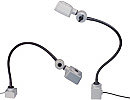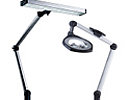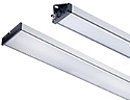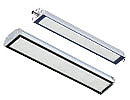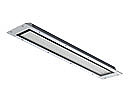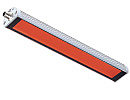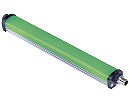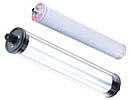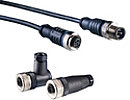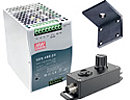LED Chips
Binning
Narrow binning stands for the quality of every single LED chip.
In the industrial production process of LED chips, there are also small deviations within individual batches and thus small differences between the individual LED chips.
The colour temperature (Kelvin) or the colour and luminous flux (lumens), the required forward voltage, differ from each other within a production batch. As a result, LED chips that are installed in a single luminaire, for example, can differ slightly from each other. This process is called binning. The LED chips, whose characteristics are wider or narrower depending on the desired quality, are sorted into different bins - i.e. containers. The larger the container or the greater the sorting tolerance, the greater the differences between the values of the individual LED chips to each other. The narrower the binning, the more complex the sorting process and, ultimately, the more expensive and high-quality the end product.
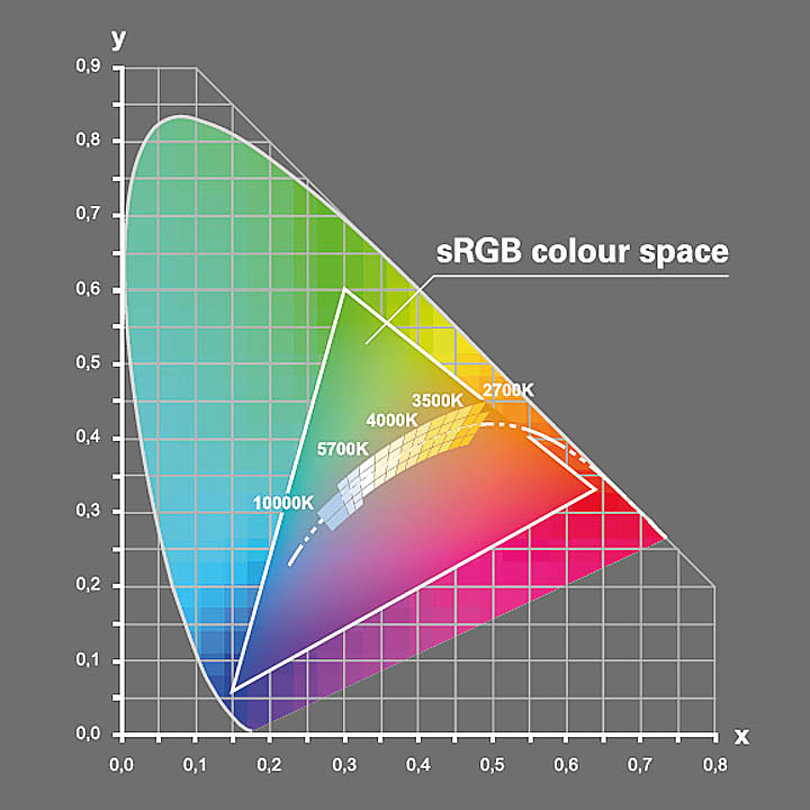
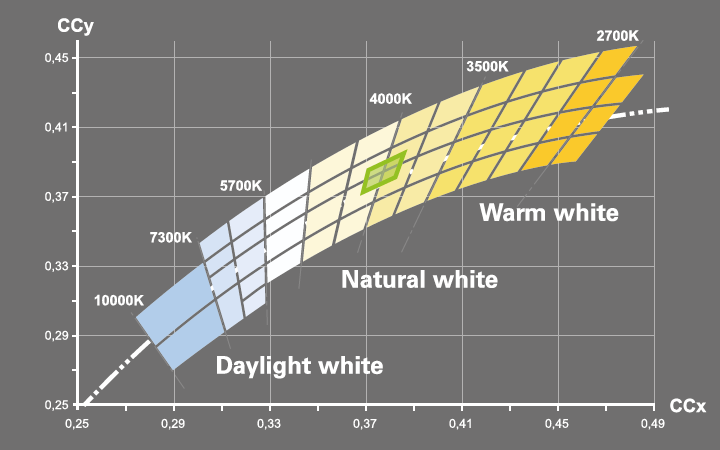
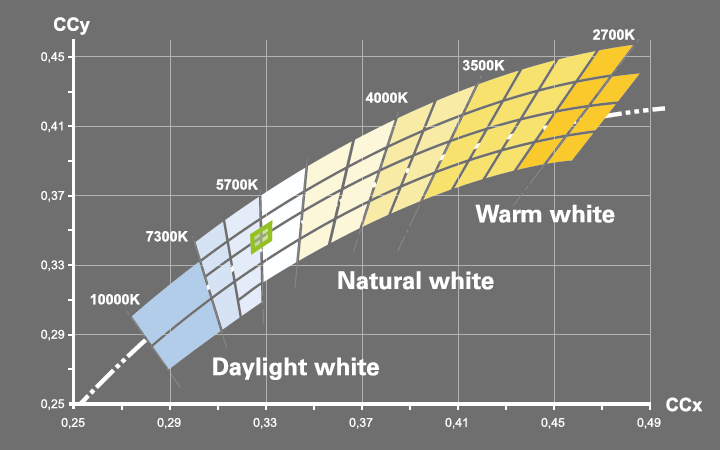

In order to guarantee a uniform character of the light, the LED chips used by us are sorted according to their properties within narrow tolerances. This guarantees you: reproducibility of luminous flux, light colour and colour rendering; within one batch and, of course, across future batches.
Energy efficiency
LED itself stands for energy-efficient lighting.
All LED2WORK luminaires feature high energy efficiency. Conventional lighting concepts from previous years are considerably below the values currently being achieved. For example, a light bulb has a luminous efficacy of up to 12 lm/W and a fluorescent lamp of up to 100lm/W. Today, the LED chips used by us are up to 180 lm/W (laboratory value, junction temperature at 25 °C Tj). LED2WORK luminaires are generally indicated with their real lumens (junction temperature at approx. 85°C Tj).
Colour rendering index Ra
The higher the colour rendering index, the more faithful the colour rendering.
The colour rendering index (CRI) is quoted as an Ra value and is the indicator for the colour rendering of the colours in light sources. This value describes how the colour rendering of an artificial light source is compared to the colour rendering in sunlight. The higher the Ra value, the better the colour rendering of the light source. The colour rendering index can reach Ra values of up to 100, which corresponds to absolutely lifelike colour rendering (sunlight, black body radiation).
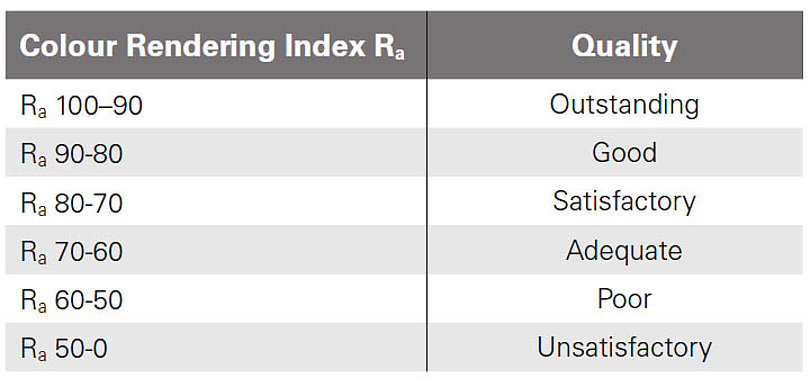
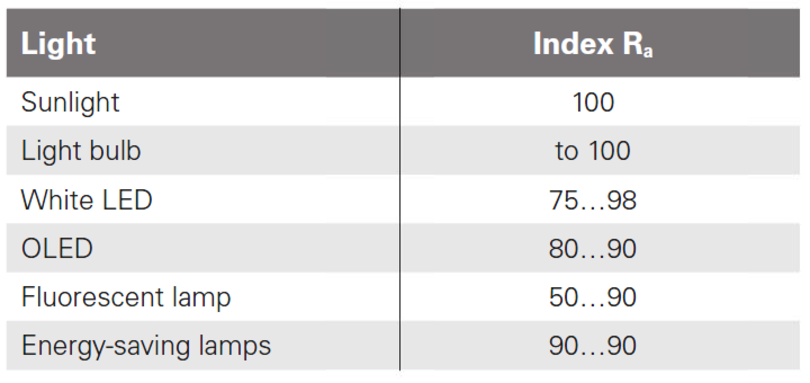
White LED
Seen from a physical aspect, there are no LED chips that emit white light. To generate white light, an LED chip is used which guides blue light through a phosphor layer. The phosphor layer complements the spectral components of the blue light, making it white.
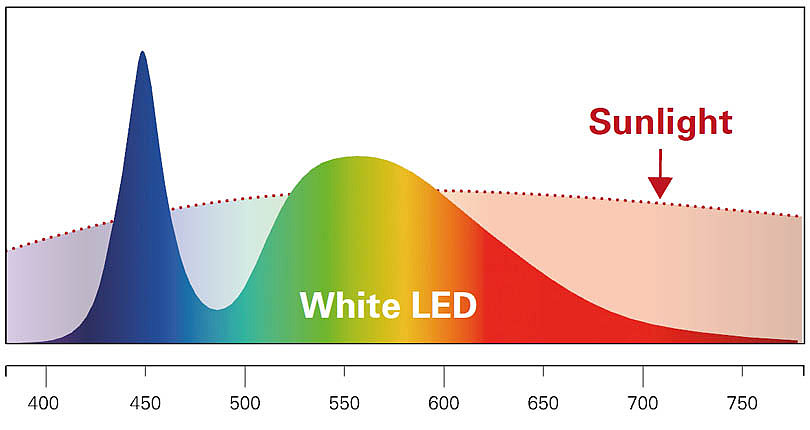
LED chips with TRI-R technology
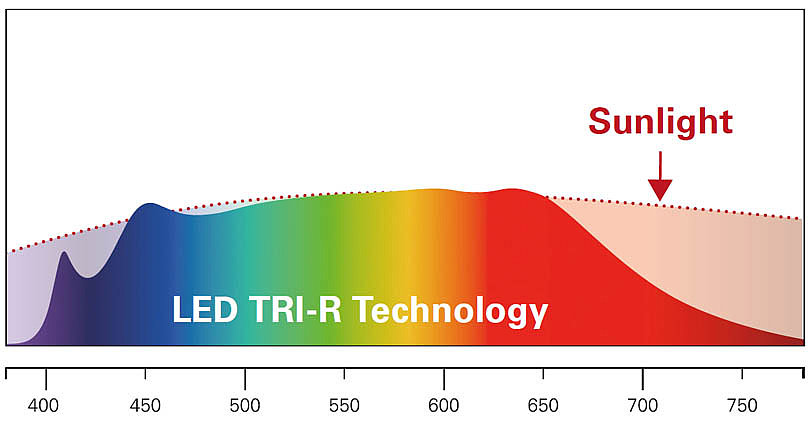
The LED chips with TRI-R technology use a semiconductor chip that emits violet light for light conversion. This light is completely converted into red, green and blue by photo luminescence. Thus there is no unconverted light from the semiconductor chip in the spectrum of these LED chips and there are no gaps in the bandwidth of this LED light. The light of the LEDs with TRI-R technology contains the entire colour spectrum comparable to sunlight and is characterised by a high colour rendering and colour quality.
Light spectrum
All LED chips used by LED2WORK have a wavelength of 400 nm to 800 nm.

